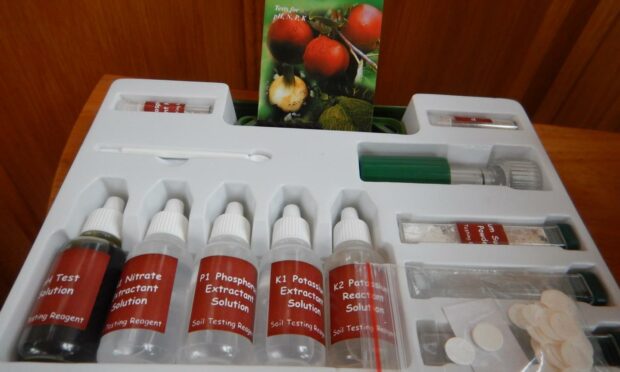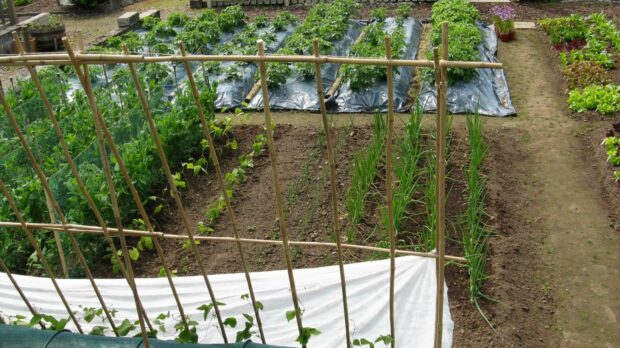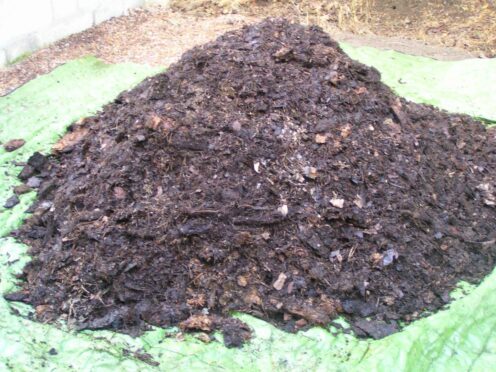There are leaves everywhere and once again I would implore you to save them for future use.
They may be regarded as a nuisance with so much time to be devoted to clearing them and some will pray that the wind will blow the lot elsewhere to become someone else’s problem.
Please turn a negative into a positive by thinking of the wonderful leaf-mould that will be created simply by piling the leaves into a heap in a sheltered corner, corralling them in a wire mesh enclosure or indeed by accommodating them in a compost bin.
The only essential ingredient to make them very useful is time.
Zero cost
After a 12-month period, you will be able to use the leaf-mould for including in potting composts, as a soil ameliorant or even as a mulch, and it costs absolutely nothing.
The time spent gathering the leaves is little enough and may provide you with some gentle exercise.
To collect them off our lawn, I use a blower/sucker gadget which has the benefit of shredding the leaves in the process.
This helps to speed up the decomposition process.
Now to an equally important subject – liming the fruit and vegetable plots, but let me start with the story of the Deeside farmer who said he had a sure-fire control for moss on grass.
His answer was to apply lime. “How much?” he was asked, to which he replied “Twa gowpin-faes (two handfuls) tae the square yaird.”
Slightly over the top I think.
What does this application rate measure in English? That, of course, depends on the size o’ the hauns.
Applying lime
Apart from being accurate and less profligate, when applying fertilisers and lime for the sake of the crop, think of the cost of these materials.
I doubt if any of our lawns in this area would need liming; on the other hand we tend to be a bit forgetful when it comes to the need to apply lime on fruit and vegetable plots.
The level of acidity/alkalinity is measured on a pH scale with pH7 being neutral. Below 7 the soil is becoming acid and above it, more alkaline.
Because of the elements, particularly rainfall and soil type, most of our soils in this part of the world are naturally acid.
A pattern to follow
Applying lime from time to time to make it less so, will benefit some of the crops we grow and there is a pattern to follow.
The pH will naturally drift downwards over several seasons hence the need for liming from time to time.
Broadly speaking, best yields are achieved when the pH level is in the pH5 to pH6 range (you can buy test kits to check this).
What does pH stand for? Forget that, just follow the instructions. (It’s a negative logarithm of something – I hinna a clue!)
Vegetable rotation
As we move to plan our cropping for next season, working out the vegetable rotation, we should be applying lime to the plot that will grow the brassicas.
For many, a four-year rotational cycle is the norm so in the winter before planting and sowing cabbages etc, we should check the pH and apply lime as required.
There is an additional reason for this timing – one of the conditions that encourages the soil-borne disease affecting brassicas, known as Clubroot, is soil acidity.
Topping up
Liming to raise the pH6 to 6.5 helps to inhibit the growth of the fungus sufficient to save the crops.
Why do we have to top up every three or four years? As well as the pH drifting downward naturally over time, lime components are being made available for use by the plants and some will inevitably be leached out in the drainage water.
Adding lime, usually in the form of Ground Limestone, has several effects on the soil and the crops that are grown.
Apart from supplying one of the important ingredients of plant food – calcium – it has two other vital roles to play.
When applied to clay soils, it will have the effect of improving the crumb structure.
A bit technical that, so I will use another old Scottish word – it helps to “curdle” the soil, making the particles aggregate into workable crumbs.
Plant nutrients
Finally, it also has the effect of unlocking the reserves of some other plant nutrients held within the soil.
This is related to the pH thing and far too chemically involved for me to understand.
I like the analogy of unlocking the supplies. What happens if you apply too much lime?
The first elements to get locked up are the minor nutrients manganese, iron and boron causing deficiency problems in some crops.
Although required for healthy growth in minuscule quantities, these chemicals are nevertheless essential nutrients for balanced growth.



